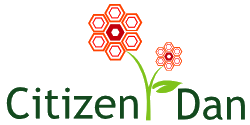| Now that the MyPeg.ca project has been unveiled at the Winnipeg Poverty Reduction Partnership Forum, I can now start to write about each and every feature of this innovative website. |  |
MyPeg.ca is a public indicators Web portal for the Canadian city of Winnipeg. It is supported by an open-source semantic web framework called OSF. This initial beta version of the Web portal emphasizes the integration, management, exploration and display of a few hundred Well-being indicators’ data for the city.
This community indicators portal is currently the best example of a Citizen Dan instance (by Structured Dynamics). MyPeg.ca has been developed using the complete OSF (Open Semantic Framework) technologies stack. It is the reason why I (we) are really proud to start writing about this new innovative project. Mike also published an article that talk about other characteristics of the Peg project.
However, this project would not have been possible without the vision and the dedication of the IISD and the United Way of Winnipeg teams along with their partners. Also, it would not have been that well designed without Tactica‘s high quality graphics and design work.
MyPeg.ca’s Technology Stack
The project fully integrates, and leverages, the OSF (Open Semantic Framework) technologies stack and is based on the Citizen Dan community indicators principles. In the coming weeks, I will write about all and every aspects of the portal, however let’s take a first general overview of what is in the box.
The OSF stack is represented by this beautiful semantic muffin:

Everything starts with MyPeg’s existing assets:
- Their Peg Framework which is the conceptual framework they created to analyze different facets of their community by leveraging a series of hundreds of indicators.
- The indicators data that they aggregated and collected from different federal, provincial, municipal and local sources
- The interviews they are performing with tens, and eventually hundreds, of Winnipeg citizens
Then all this data has been imported into the structWSF semantic data management framework by using two other pieces of technology:
- The indicators data is described using the commON irON profile, and is maintained by the IISD team using a set of Excel spreadsheets. Then the dataset have been imported using the structImport conStruct module.
- The interviews have been analyzed, tagged and imported in the system by using the Scones service and its structScones conStruct user interface.
Once all the data gets imported into the structWSF instance, it becomes available to all the conStruct modules, all the Semantic Components and all other tools that communicate with the structWSF web service endpoints.
Then ontologies have been used to describe the Peg Framework and to describe all the attributes of all the records (Neighborhoods, Cities, Community Areas and Stories). Already existing ontologies such as SCO have also been used for different criteria (such as driving the usage of the Semantic Component tools).
Then the sRelationBrowser, sDashboard, sMap, sStory, sBarChart and the sLinearChart Semantic Components along with the PortableControlApplication and Workbench applications have been used by Peg to create, manage, explore and publish information from their datasets.
Finally, the entire portal is published using Drupal and the set of conStruct modules. conStruct is the user interface to the structWSF web service endpoints. The mix of Drupal & conStruct templating technologies make it the perfect match to expose all the data, in different ways, by embedding different tools (such as the Semantic Components) depending on different criteria (user permissions, how the information is described into the system, etc.).
This is not a simple technology stack. However, this MyPeg.ca project is a good example of how an organization that never worked with semantic web technologies in the past have been able to has a long term vision of its objectives and how it understands that semantic technologies could help it to reach the aims of its vision. Then it demonstrates how everything has been integrated in an innovative Web portal.
Next Steps…
As I said above, in the coming weeks I will write about each of these technologies. I will show how each of them have been leveraged into the MyPeg.ca portal: how such generic tools have been used for highly specific tasks within the Peg project. Here is an overview of what is coming, where each main topic will result in a new blog post:
- How to integrate MyPeg indicators data into any Web application by using the structWSF web service endpoint
- Querying the MyPeg datasets, the geeky way, using the SPARQL endpoint
- Six ways to get data out of the system
- By using the CrudRead/Search/Browse web service endpoints
- By querying the SPARQL endpoint
- By dereferencing record URIs
- By using the export features on any record view pages
- By using the export features of the search/browse modules pages
- By using the structExport conStruct module
- How to create and maintain indicators dashboard sessions using the Workbench application
- How to integrate dashboard sessions into any Web page
- Displaying dashboard sessions into record pages
- Displaying dashboard sessions while using the Peg framework explorer tool
- Displaying dashboard sessions into indicators analysis reports
- How to use maps:
- as an information browsing tool
- to contextualize instance records
- to contextualize information in dashboard sessions
- How to use the explorer (sRelationBrowser) to browse conceptual structure and to display all kind of related information at each step
- Use of Scones to analyze, tag, index and display unstructured data
- Use of ontologies to drive the system
- How ontologies are used to describe conceptual frameworks that drive these portals
- How ontologies are used to drive the semantic components (SCO)
- Use of the commON irON profile and conStruct to serialize indicators data and to import it into the system
- The benefits of commON as a common ground between the semantic web practitioner and the client.
- commON as a wonderful format to manage indicator related datasets by indicators practitioners.
So stay tuned, because plenty of innovative stuff is coming!



 Structured Dynamics just released the
Structured Dynamics just released the 